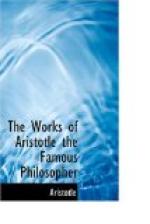A
PRIVATE LOOKING-GLASS
FOR THE
FEMALE SEX
* * * * *
PART II
* * * * *
CHAPTER I
Treating of the several
Maladies incident to the womb, with proper
remedies for the cure
of each.
The womb is placed in the hypogastrium, or lower part of the body, in the cavity called the pelvis, having the straight gut on one side to protect it against the hardness of the backbone, and the bladder on the other side to protect it against blows. Its form or shape is like a virile member, with this exception, that the man’s is outside, and the woman’s inside.
It is divided into the neck and body. The neck consists of a hard fleshy substance, much like cartilage, and at the end of it there is a membrane placed transversely, which is called the hymen. Near the neck there is a prominent pinnacle, which is called the door of the womb, because it preserves the matrix from cold and dust. The Greeks called it clitoris, and the Latins praeputium muliebre, because the Roman women abused these parts to satisfy their mutual unlawful lusts, as St. Paul says, Romans 1. 26.
The body of the womb is where the child is conceived, and this is not altogether round, but dilates itself into two angles; the outward part is full of sinews, which are the cause of its movements, but inside it is fleshy. It is wrongly said, that in the cavity of the womb there are seven divided cells or receptacles for the male seed, but anatomists know that there are only two, and also that those two are not divided by a partition, but only by a line or suture running through the middle of it.
At the bottom of the cavity there are little holes called cotyledones, which are the ends of certain veins or arteries, and serve breeding women to convey nourishment to the child, which is received by the umbilical and other veins, to carry the courses to the matrix.
As to menstruation, it is defined as a monthly flow of bad and useless blood, and of the super-abundance of it, for it is an excrement in quality, though it is pure and incorrupt, like the blood in the veins. And that the menstruous blood is pure in itself, and of the same quality as that in the veins, is proved in two ways.—First, from the final object of the blood, which is the propagation and preservation of mankind, that man might be conceived; and that, being begotten, he might be comforted and preserved both in and out of the womb, and all allow that it is true that a child in the matrix is nourished by the blood. And it is true that when it is out of it, it is nourished by the same; for the milk is nothing but the menstruous blood made white in the breast. Secondly, it is proved to be true by the way it is produced, as it is the superfluity of the last aliment of the fleshy parts.




